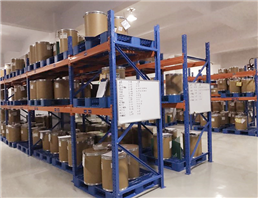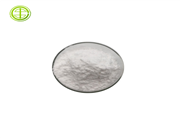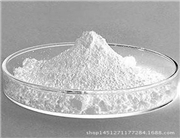Product Information
Product name | Dasatinib |
Molecular Formula | C22H28CIN7O3S |
Molecular Weight | 506.02 |
CAS No. | 302962-49-8 |
Quality Standard | USP26, EP, medical grade |
Appearance | White powder |
COA of Dasatinib
ITEMS | SPECIFICATION | RESULTS |
IDENTIFICATION | POSITIVE REACTION | CONFORMS |
Water | ≤1.5% | 0.9% |
LOSS ON DRYING | ≤0.1% | 0.03% |
RESIDUE ON IGNITION | ≤0.1% | 0.02% |
CHROMATOGRAPHIC PURITY | RANITIDINE RELATED COMPOUND B≤0.5% ANY OTHER IMPURITY≤0.3% THE SUM OF ALL IMPURITIES≤1.0% | CONFORMS CONFORMS CONFORMS |
ORGANIC VOLATILE IMPURITIES | AS STIPULATED | CONFORMS |
ASSAY (ON DRY SUBSTANCE) | 98.0%~102.0% | 99.8% |
CONCLUSION | CONFORMS TO in house
|
Usage
Function of Dasatinib
Dasatinib (DASA tin IB), used for all treatment stages (chronic phase, accelerated phase) Stage, lymphoid cell blast crisis and myeloid blast crisis) adult patients. At the same time, the FDA also approved Dasatinib through normal procedures to treat Philadelphia chromosome-positive acute lymphoblastic leukemia adult patients who are resistant or intolerant to other therapies.
Dasatinib inhibits BCR-ABL kinase and SRC family kinases as well as many other selective oncogenic kinases, including c-KIT, ephrin (EPH) receptor kinase and PDGFβ receptor. Dasatinib is a potent, subnanomolar BCR-ABL kinase inhibitor with a strong activity at a concentration of 0.6 to 0.8 nmol. It can be combined with the inactive and active configurations of the BCR-ABL enzyme.
In vitro studies, dasatinib is active in leukemia cell lines expressing various imatinib-sensitive and drug-resistant diseases. The results of these non-clinical studies indicate that dasatinib can overcome imatinib resistance caused by: BCR-ABL overexpression, BCR-ABL kinase region mutations, kinases including SRC family kinases (LYN, HCK) in Over-expression of other signaling pathways within, as well as multidrug resistance genes. In addition, dasatinib can inhibit SRC family kinases at this nanomolar concentration
In an in vivo experiment conducted using the murine CML model alone, dasatinib prevented the progression of chronic phase CML to the acute phase, while prolonging tumor-bearing mice (derived from patient CML cell lines growing in different locations, including the central Nervous system)


 China
China








